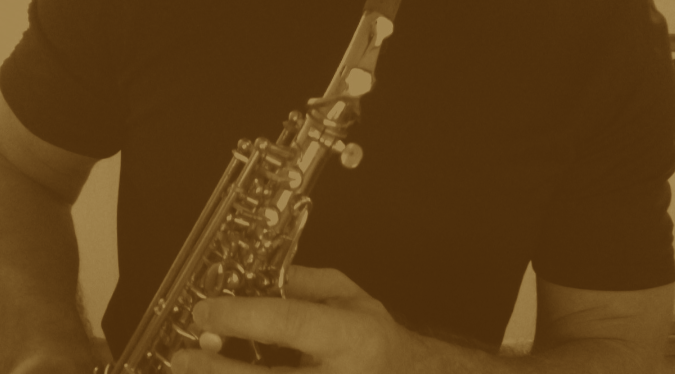
Whereas most of my blog posts are written with all instrumentalists in mind, this particular post is aimed exclusively towards wind instrumentalists and singers. It addresses a common misconception about how you manage the movement of the air on the exhalation as you play or sing.
The idea has to do with the concept of the “velocity” of the airstream.
As you know, you must use your respiratory mechanism in an extraordinary way when singing or playing a wind instrument. You are not simply breathing in a completely passive way. You are using your breath with an energetic purpose that serves both function (physiological and mechanical) and self-expression.
And of course, the “working part” of the breath cycle is the exhalation. In large part, this kind of management of the exhalation involves changing the velocity of the airstream.
Yet, what you do with yourself to manage those necessary changes in air speed can significantly impact not only your breathing, not only your sound, but also the coordination of your entire body and ultimately, your skill.
One of the ways that air is “sped up” is by “compressing” the airstream. (In short, everything else being equal, a narrower airstream means “faster air”.)
And there’s where the problems sometimes begin.
I once watched a video of a highly skilled, fairly well-known trumpet player talking about the importance of “compression” when using the airstream.
In fact, it was something that he encouraged his viewers to do consciously each time they began to play a note or a phrase.
Now, he was talking about doing something with the airstream, but it was interesting for me to see what he was doing with his whole self as he carried out the instructions he advocated.
His entire body went into a state of “compression”.
Specifically, his head was pulled down onto his spine, his ribs were pulled downward with great force toward his abdomen (which was actively involved in distorting his pelvis), and his shoulders became rigid and narrow. I couldn’t see his lower half, but I imagine that was affected as well.
In essence, as this very fine trumpet player compressed his airstream, he simultaneously compressed and shrunk himself. (For the record, I’m not here to criticize this musician, only to call into question some of his ideas. I’d say he plays very well, despite what he’s doing with himself.)
But here’s the truth:
For you to compress your airstream you don’t need to compress yourself.
Really. You don’t.
You certainly need to use a considerable amount of muscular energy to move the air, especially at high velocities.
But this muscular energy doesn’t need to involve shortening your three-dimensional stature.
Here’s why.
First, because of the way your ribs attach to and move with your spine, the natural, structural tendency of your spine is to lengthen on the exhalation.
It will do so, even with tremendous muscular energy, if you let it.
Second, by forcefully pulling your ribs downward into your abdomen, you are interfering with two things: The full excursion of the diaphragm and the full excursion of the ribs.
The movement of the ribs in concert with the diaphragm is essential to optimal breathing.
Third, by compressing your respiratory mechanism in this manner as you exhale, you signficantly impact the coordination of the following inhalation, again limiting the excursion of the ribs and diaphragm.
It is these reciprocal excursion patterns between the ribs and the diaphragm (and other parts of you, as well) that are essential to all breathing, both natural and task-specific.
So what to do instead?
Mostly, subtract a few things.
First, subtract a noisy, forced inhalation (which often carries with it a tense jaw). Instead, aim for a free, energetic and expansive reflexive inhalation.
Second, don’t pull your head down into your spine. If you need more muscular energy, direct it upwards, as you ride the wave of your naturally lengthening spine. Allow your neck and jaw to be supple and responsive.
Third, avoid pulling your ribs down forcefully on the exhalation. Imagine your ribs (including the muscles between them) as being in an active, but gentle state of opposition to your upward moving spine. As your ribs slowly descend, your spine gently lengthens, as you move the air into your instrument at the most optimal velocity.
Fourth, allow your abdominal muscles to respond to the needs of moving the airstream, as opposed to a preconceived set amount of tension. If you work with this idea a while, you’ll learn to trust that your intention with your sound (range, color, pitch, etc.) will inform your neuromuscular system to do the right thing with your abs (and all the other muscles involved in supporting your airstream and sound). This “response” I’m talking about will take place instantly, optimally and organically. Naturally, if you will.
In sum, aim towards separating the concept of air compression from bodily compression. To be clear, I’m not talking about using less muscular effort, so much as avoiding misdirected muscular effort.
Allow yourself to move freely and energetically (always aiming upward), with a three-dimensionally expanding organism. You might be surprised at how much easier and more efficiently you can “move your air” to create the sound you wish for. And as a bonus, you’ll avoid some of the patterns of misuse that often lead to fatigue and injury. Win/win.

